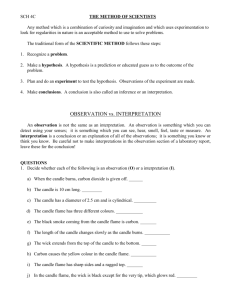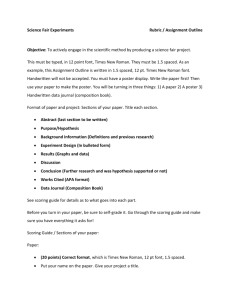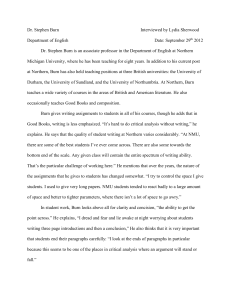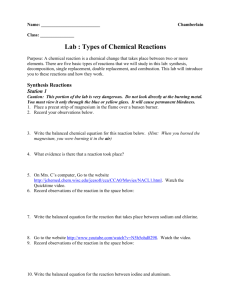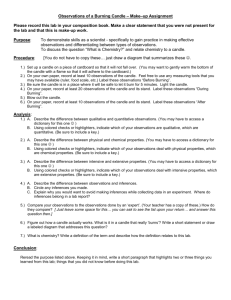IP012 - IoSM
advertisement
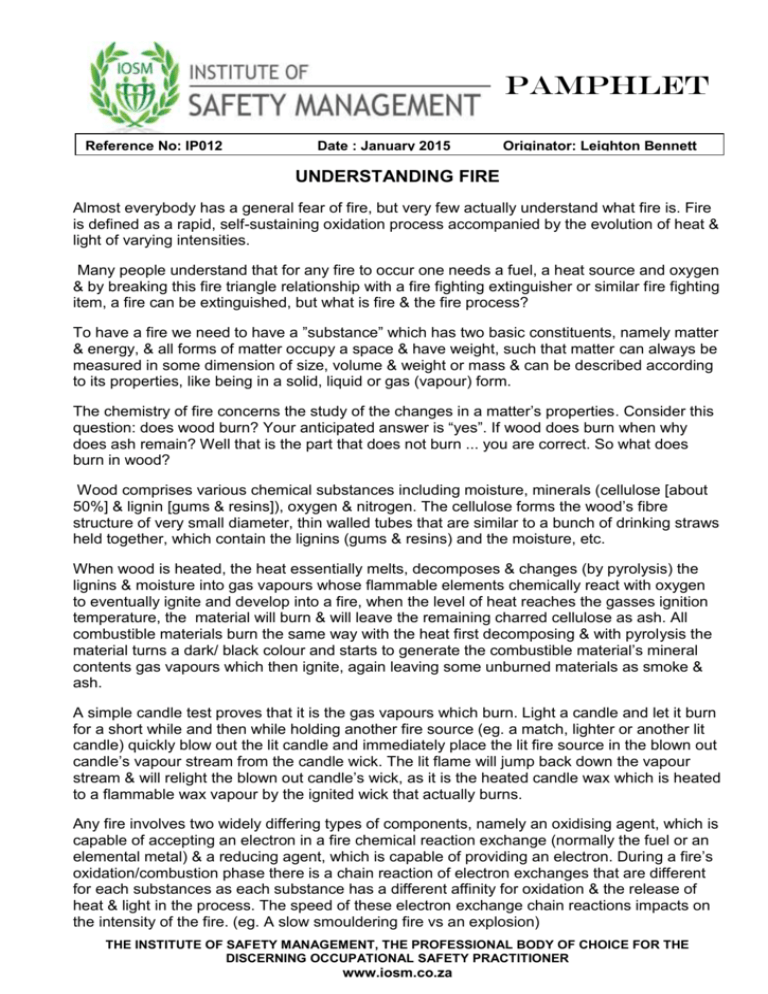
PAMPHLET Reference No: IP012 Date : January 2015 Originator: Leighton Bennett UNDERSTANDING FIRE Almost everybody has a general fear of fire, but very few actually understand what fire is. Fire is defined as a rapid, self-sustaining oxidation process accompanied by the evolution of heat & light of varying intensities. Many people understand that for any fire to occur one needs a fuel, a heat source and oxygen & by breaking this fire triangle relationship with a fire fighting extinguisher or similar fire fighting item, a fire can be extinguished, but what is fire & the fire process? To have a fire we need to have a ”substance” which has two basic constituents, namely matter & energy, & all forms of matter occupy a space & have weight, such that matter can always be measured in some dimension of size, volume & weight or mass & can be described according to its properties, like being in a solid, liquid or gas (vapour) form. The chemistry of fire concerns the study of the changes in a matter’s properties. Consider this question: does wood burn? Your anticipated answer is “yes”. If wood does burn when why does ash remain? Well that is the part that does not burn ... you are correct. So what does burn in wood? Wood comprises various chemical substances including moisture, minerals (cellulose [about 50%] & lignin [gums & resins]), oxygen & nitrogen. The cellulose forms the wood’s fibre structure of very small diameter, thin walled tubes that are similar to a bunch of drinking straws held together, which contain the lignins (gums & resins) and the moisture, etc. When wood is heated, the heat essentially melts, decomposes & changes (by pyrolysis) the lignins & moisture into gas vapours whose flammable elements chemically react with oxygen to eventually ignite and develop into a fire, when the level of heat reaches the gasses ignition temperature, the material will burn & will leave the remaining charred cellulose as ash. All combustible materials burn the same way with the heat first decomposing & with pyrolysis the material turns a dark/ black colour and starts to generate the combustible material’s mineral contents gas vapours which then ignite, again leaving some unburned materials as smoke & ash. A simple candle test proves that it is the gas vapours which burn. Light a candle and let it burn for a short while and then while holding another fire source (eg. a match, lighter or another lit candle) quickly blow out the lit candle and immediately place the lit fire source in the blown out candle’s vapour stream from the candle wick. The lit flame will jump back down the vapour stream & will relight the blown out candle’s wick, as it is the heated candle wax which is heated to a flammable wax vapour by the ignited wick that actually burns. Any fire involves two widely differing types of components, namely an oxidising agent, which is capable of accepting an electron in a fire chemical reaction exchange (normally the fuel or an elemental metal) & a reducing agent, which is capable of providing an electron. During a fire’s oxidation/combustion phase there is a chain reaction of electron exchanges that are different for each substances as each substance has a different affinity for oxidation & the release of heat & light in the process. The speed of these electron exchange chain reactions impacts on the intensity of the fire. (eg. A slow smouldering fire vs an explosion) THE INSTITUTE OF SAFETY MANAGEMENT, THE PROFESSIONAL BODY OF CHOICE FOR THE DISCERNING OCCUPATIONAL SAFETY PRACTITIONER www.iosm.co.za


